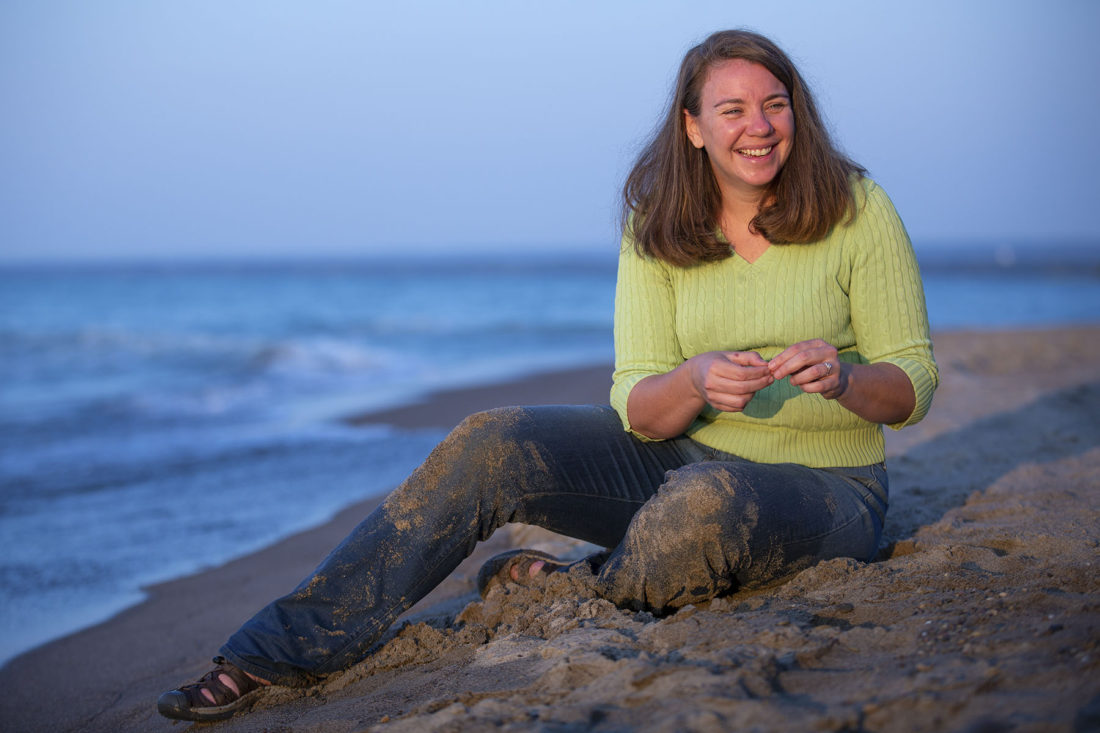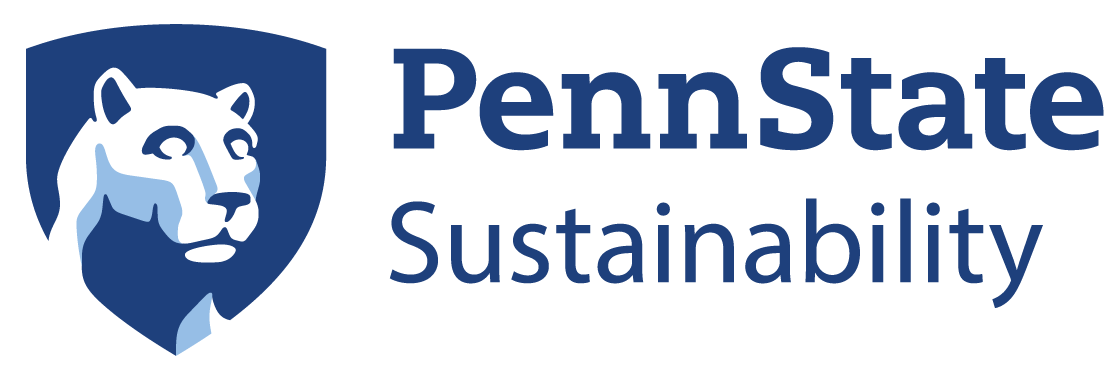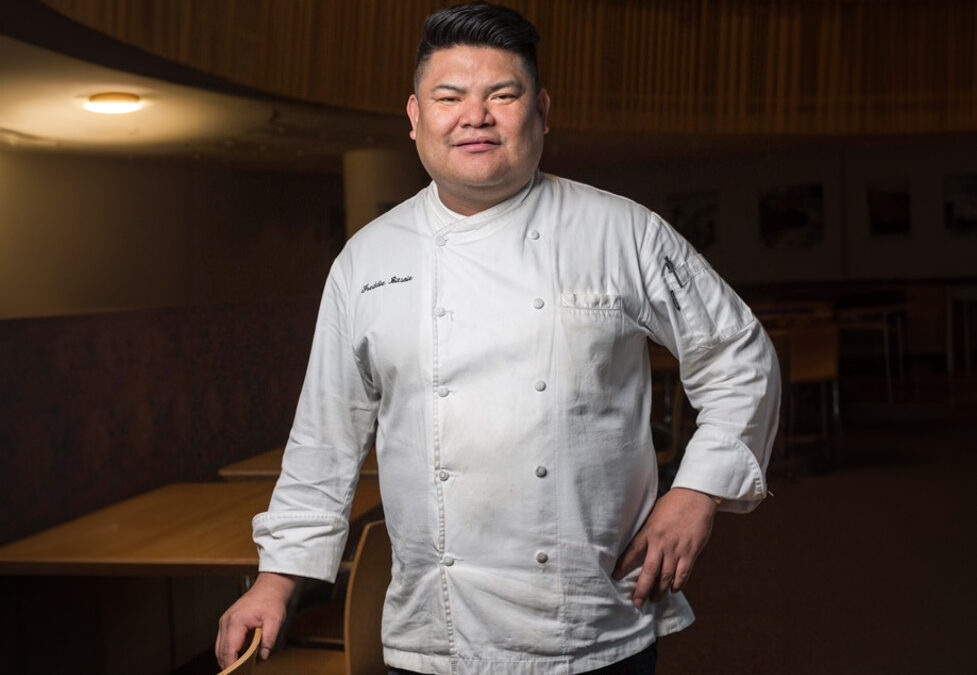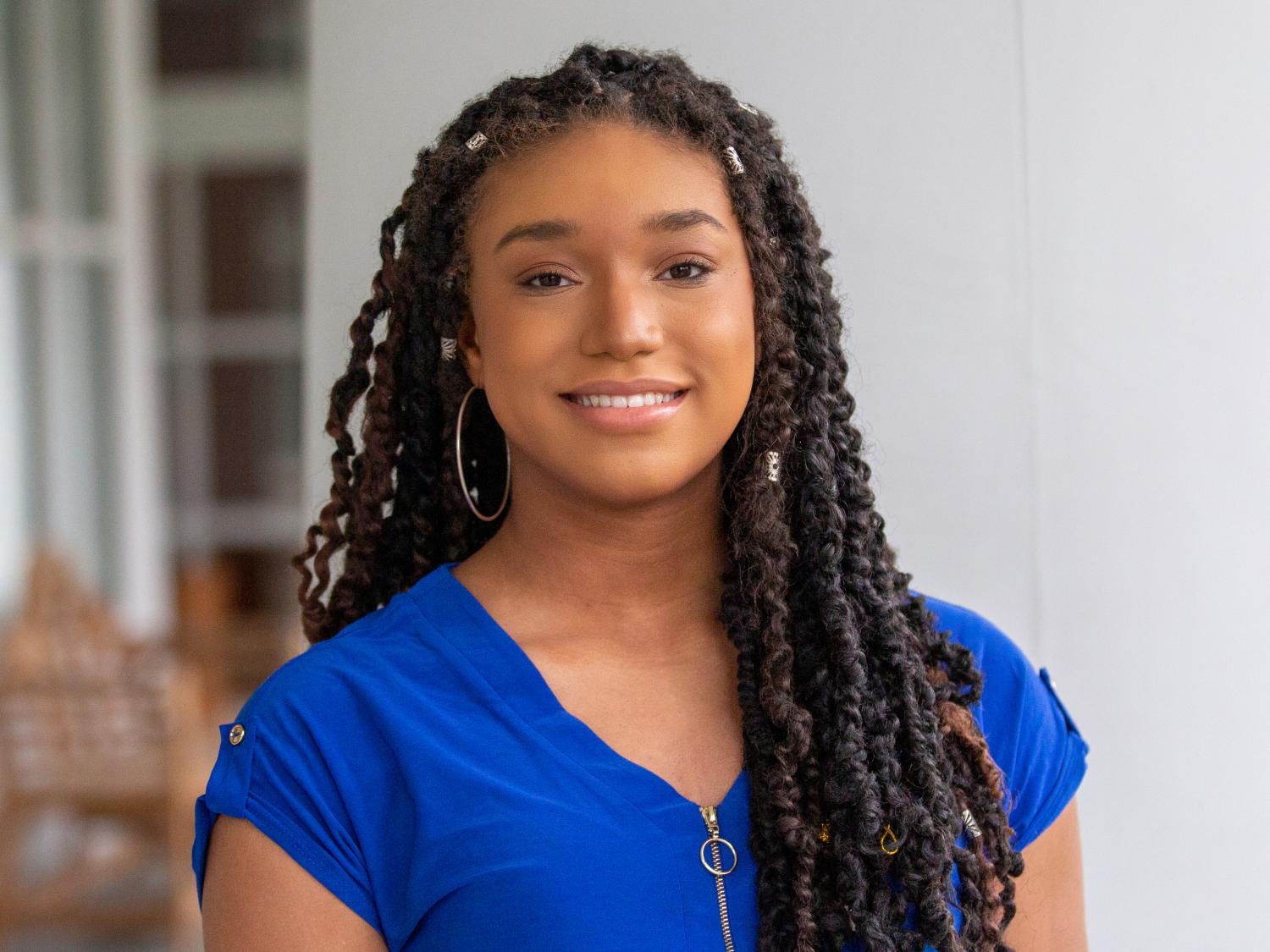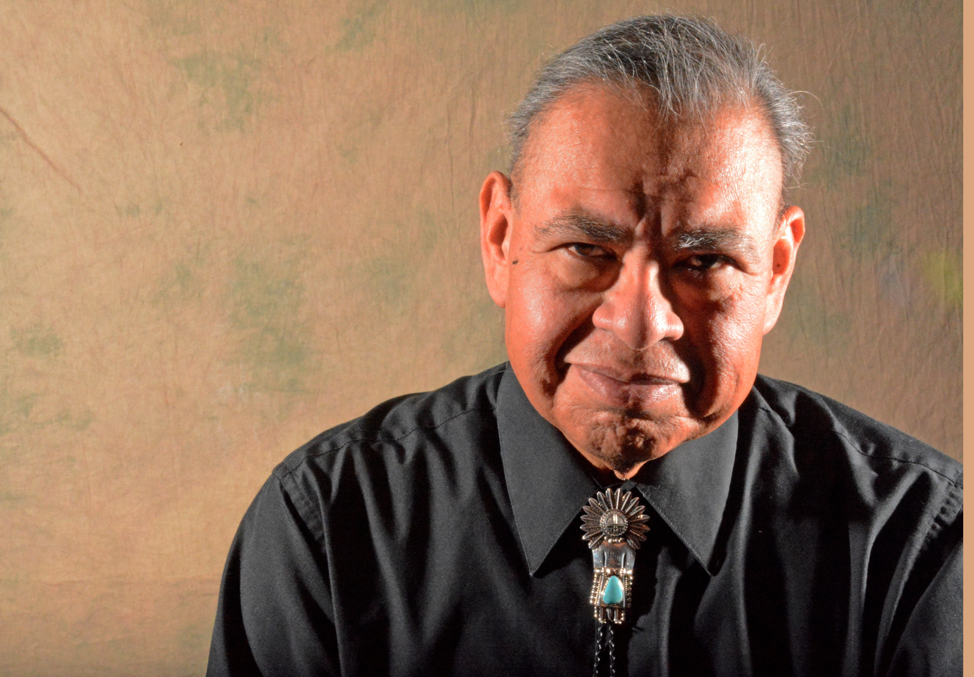Dr. Sherri “Sam” Mason, Director of Sustainability
Dr. Sherri “Sam” Mason is the Director of Sustainability for Penn State Behrend. She has dedicated much of her research and work to sustainability and environmental chemistry. As a researcher, her work in freshwater plastics pollution led to the Microbeads Free Water Act of 2015. As a sustainability coordinator, she is helping her campus and the surrounding communities become more sustainable and prosperous.
Why is sustainability Important to you?
Sustainability is important to me because I am a mom, and I want there to be a planet and a society in which my daughter can live in, and I hope to have grandchildren someday who can also thrive. I was 10 years old when I watched this TV show called Different Strokes, and there was an episode in which the daughter turned her hair green from washing it with rainwater. They had collected this rainwater in a copper bowl and (according to the show) the acidity of the rain leeched copper into the water and it stained her hair. So, it was because of acid rain, basically, that her hair turned green. It was the first moment that I realized that one: humans are having an adverse effect on the environment, and two: we can affect the ability of other species to live. In that moment, I decided that I was an environmentalist, because that just seemed fundamentally wrong to me. My appreciation has only grown from there, it’s not just about the environmental aspects but the social aspects of sustainability as well. It’s really about the ability of humans and other species to continue to live on this planet. To our knowledge, we’re the only planet that has life. And well…I’d like it to continue.
What drew you towards your field of study and incorporating sustainability into it?
I became a chemist because of a project I did when I was 12 years old in school on why oil and water don’t mix. To me, it was fascinating, this whole world of molecules. And so, I basically became an environmental chemist by the age of 12. It was my path.
What aspects of sustainability does your work focus on the most?
Probably life on land and life below water, SDGs 14 and 15. I think those are because I study plastic pollution. So as a researcher, that’s where my focus is. With regards to what I’m doing on campus, I try and touch on all of them. Even with our work in say, the Lion’s Pantry, where we now have reusable feminine hygiene products that are freely available to students. Our strategic plan has some aspects that touch on all 17 of the UN SDGs. We always try to think about ways that we can make the university more accessible to students and people in general.
Can you give a general overview of what your work on investigating plastic weights waterways was and what it led to?
When I started as a chemistry professor, the Great Pacific Garbage Patch, as it is “affectionately” known, had just been discovered by Captain Charles Moore. And that’s really where the issue of plastic pollution started, in the oceans. However, I live on the Great Lakes, and I was sailing out in the lakes as part of a class. A question popped in my head as I was out there which was, as much as we know about plastic pollution in the world’s oceans, I wonder what we know with regard to freshwater systems. And here I am sitting on the largest freshwater system in the entire planet. And I was really surprised when I went back and did a literature review that there was just nothing. So, my work started in the Great Lakes, and from there it has moved into the tributaries that feed the Great Lakes, among other related areas.
In our first studies within the Great Lakes, we found these high concentrations, largely in Lake Erie, of these really small little beads that have since been referred to as micro beads, which are connected to personal care products such as body and face washes. As a consequence of that study, regulations started to pass. New York State was the first one to propose it, and then Illinois was the first one to pass something. And then it just started hopscotch all across the country. Then, congress unanimously passed the Microbeads Free Water Act of 2015.
What areas are you researching in plastic waste now?
My past work ended up focusing on microplastics in waterways simply because that is what we found. These particles of plastic that are smaller than five millimeters, like the size of a grain of salt or sugar, and even smaller. Those are the bigger concern when it comes to health and ecological impacts because if something is smaller than 100 microns, it can actually make its way across our gastrointestinal tract, be carried in our blood and up into our liver, kidneys, and even our brains. However, with regards to policies, it’s hard to regulate something that gets that small. Policymakers need data on bigger pieces of plastic. So, my current project is moving away from microplastics into what we call macro plastics and trying to provide data that can help policymakers to regulate what is ultimately leading to the microplastics. We’re looking at commonly littered items that lead to these microplastics. And it will be no surprise to anybody what we’re finding. It’s cigarette buds, it’s bottles, it’s caps, it’s food wrappers, and it’s industrial pellets.
How does science communication fit into sustainability?
If issues are not communicated effectively to the public, how are people supposed to vote on those issues? We need people who can write about science. So, if you understand science and can write with intelligence, go into journalism, go into communications. We need people who can translate because scientists are awful at it. We are really bad. Generally speaking. We are really bad at communicating what we do into a way that the general public can understand. So, we need effective science communication.
What made you want to become a sustainability coordinator?
Well, there’s all the science that’s happening, but the public isn’t necessarily informed about it and it’s not being used to inform policy. So, I became much more of an advocate and really started to incorporate more of the scientific basis for policies into my discussions in class. As scientists, we’re kind of taught to compartmentalize what we do in the lab, which almost has nothing to do with what we do in life. However, those things should overlap, those things should connect, there should be more of that kind of discussion. And then from that grew the awareness about other aspects of sustainability. For example, it’s hard to get people to care about the burning of the Amazon rain forest if they don’t have a job and a way to put food on the table and a roof over their heads, right? So, there is this economic piece as well. This idea, sustainable development, is the understanding that there is an economic system that we are a part of that needs to exist so that we can put food on the table. And we need to meet these basic, fundamental needs before we can really get people to appreciate the bigger environmental issues that are facing us as a society.
What are some projects you are working on at Penn State Behrend right now?
Last year, we completed our sustainability assessment called STARS. We were the first commonwealth campus to engage in this assessment, and we got a bronze star. I was actually decently happy about that because it’s not the lowest ranking. We were also only four points away from getting silver. So silver is very much attainable by the next time that we’re filling this report out. We’re trying to use that data to help us focus our strategic plan and then prioritize actions. We have three main goals. One is education; one is what I call stewardship, which really has to do with maintenance, operations, and purchasing; and one is the social side. Those are our three main goals, and then we have 12 objectives under those goals at 58 action items under these 12 objectives. One of the projects within that strategic plan is an energy audit for our campus. That can help us to really understand what are some energy projects that we could be doing on campus to save on our energy usage. One thing that I immediately think of is new windows and replacing old boilers.
When you’re approaching like a sustainability initiative or devising a sustainability project, what do you look for and what makes a project successful?
You have to talk with people and find out what is it that other people want. Like, I have my ideas for what operations should be doing, but it is also important for me to talk to maintenance and operations and say, hey, what did you guys think you need? What do you guys see? They told be about a 44-year-old boiler in the basement of our Science Complex. I had no idea before talking with them, so obviously boiler repair was not anywhere in the realm of my ideas.
What do you hope are the impacts of your work in the future?
For the big picture, I want us to be a net zero campus with regards to energy and resource uses. And you know, that’s a very lofty goal. So more realistically, right now, I’m really focused in on a project that’s expanded beyond campus into the Erie Community, which is creating a circular economy here in Erie. While I am very focused on campus initiatives, I’ve also started to branch out beyond campus and really try and think about how Erie as a community can be much more sustainable and serve as a model for other Great Lakes communities, and how they can provide that infrastructural support for what I need to do on this campus.
Can you explain a little bit like what a circular economy is and what that means?
Yeah. So, we’ve all heard about water cycle and the carbon cycle, the nitrogen cycle. The idea is to have a society that is built on that circularity. For example, products would not become waste that can be reused. Some of this could be something as simple as rather than your shampoo coming in a plastic bottle that then becomes waste (in theory it could be recycled, but there’s issues with recycling plastic), it instead comes in something like stainless steel that can then be washed and reused, refilled, and then used again. It’s really a change in mindset when it comes to a business. Because in a business sense, the traditional linear path is that businesses create a product that is purchased, and the point is to sell a product. In a circular economy, it becomes less about the product. So, for example, in a linear sense, a company selling a light bulb would want it to burn out so that you have to go and buy another light bulb. In a circular economy. If instead of buying the light bulb, you’re buying the ability to have a light bulb. Basically, you’re renting the light bulb. Now, the business is making profit not off the product itself, but off of the use of that product. That then changes the incentive from wanting the light bulb to burn out to wanting it to last a really long time.
Imagine it’s 20 years in the future and Penn State has steps to become more sustainable and communities have become more resilient. What does that look like to you?
Circularity. As well as being sustainable, it also makes things more accessible to lower income people as products become cheaper with circularity. So to me, that’s, that’s what 20 years in the future looks like. It’s about circularity. Taking our cue from nature. The planet has existed for 4.6 billion years because it exists on cycles, not on linear paths. As a society, we will only survive if we also work in cycles.
